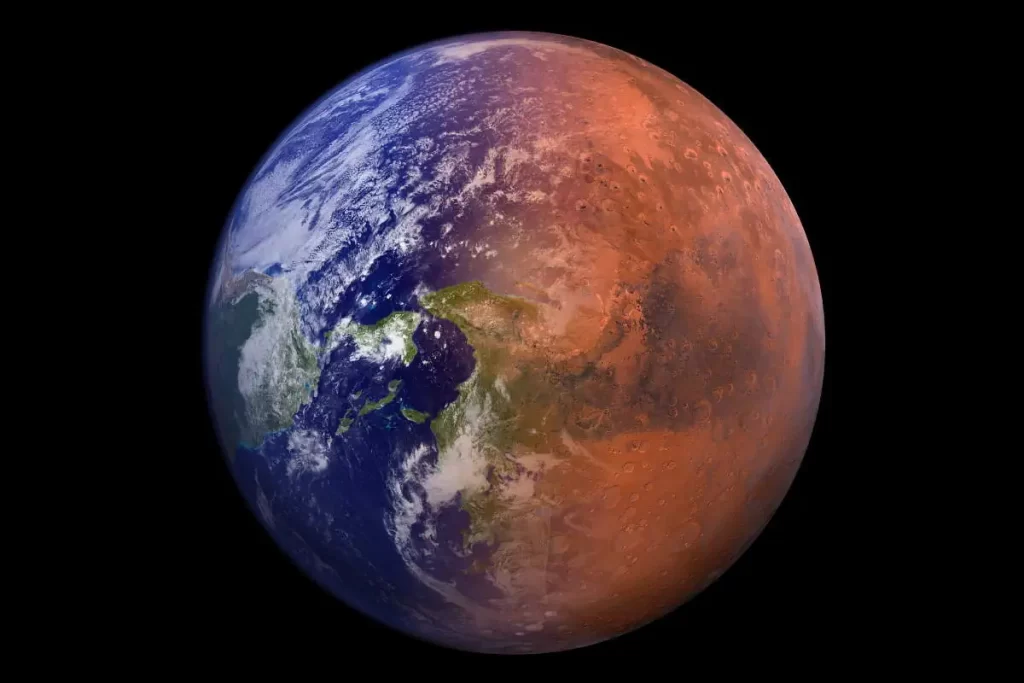Mars, often referred to as the Red Planet, boasts an atmosphere dominated by carbon dioxide, a gas typically associated with warmth-inducing greenhouse effects on Earth. Yet, anyone expecting balmy temperatures on Mars would be in for a chilly surprise. Despite its CO₂-rich atmosphere, Mars remains an icy desert with temperatures often plummeting far below freezing. The paradoxical nature of a cold planet blanketed by a gas known for trapping heat sparks curiosity and demands an explanation. In this article, we’ll delve into the multifaceted reasons behind Mars’ frigid climate, revealing the intriguing interplay of astrophysical, geological, and atmospheric factors that keep our neighboring planet cold.
The reasons why Mars is cold
Mars does indeed have an atmosphere that is composed of over 95% carbon dioxide (CO₂). On Earth, high concentrations of CO₂ are often associated with a greenhouse effect that warms the planet. However, there are several reasons why Mars remains cold despite its CO₂-rich atmosphere:
1. The thin atmosphere
The Martian atmosphere is remarkably thin, especially when compared to Earth’s. It possesses less than 1% of Earth’s atmospheric pressure. This density plays a pivotal role in heat retention: a thicker atmosphere can trap more heat, intensifying the greenhouse effect. Mars’ sparse atmosphere, due to its limited density, curtails its capability to retain warmth. As a consequence, even with a dominance of CO₂, its potential to significantly warm the planet is considerably diminished.
2. Distance from the Sun
Mars orbits the Sun at a distance of about 1.5 astronomical units (AUs). An astronomical unit (AU= is a standard measure used in astronomy, equivalent to the average distance between Earth and the Sun, which is approximately 93 million miles or 150 million kilometers. While Earth is 1 AU from the Sun, Mars, being 1.5 AUs away, is further by half this distance. This increased distance results in Mars receiving proportionally less sunlight. Consequently, with less solar radiation reaching its surface, Mars absorbs and retains significantly less energy compared to Earth.
3. Low Atmospheric Water Vapor
Water vapor is a potent greenhouse gas, even more effective than carbon dioxide at trapping heat in an atmosphere. Earth’s atmosphere contains a significant amount of water vapor, which contributes to our planet’s greenhouse effect. Mars’ atmosphere has very little water vapor, reducing its potential greenhouse effect.

4. Mars has a high Albedo
The surface of Mars, with its widespread dusty and rocky terrain, reflects a significant amount of sunlight back into space. This reflective property, known as albedo, means that less sunlight is absorbed by the surface to be re-radiated as heat.
5. Lack of a Magnetic Field
Earth’s magnetic field helps to protect our atmosphere from being stripped away by solar winds. Mars, on the other hand, lacks a strong, planet-wide magnetic field. Over billions of years, this has allowed solar winds to strip away a significant portion of Mars’ atmosphere, making it thinner and less capable of trapping heat.

Related: How Mars Died? The Death Of Mars
6. Lack of the Oceans
Oceans act as massive heat reservoirs on Earth. They absorb, store, and slowly release heat, helping to moderate Earth’s climate. Mars has no liquid oceans, so it lacks this heat-buffering effect.
Given these factors, while CO₂ does contribute to a greenhouse effect on Mars, the overall effect is not sufficient to warm the planet significantly. As a result, Mars remains a cold desert world with average temperatures far below freezing.
Sources
- The climate of Mars on Wikipedia
- Mars – In Depth on the NASA Solar System Exploration website
- Moon Landings: All-Time List [1966-2025] - February 2, 2025
- What Is Max-Q and Why Is It Important During Rocket Launches? - January 16, 2025
- Top 10 Tallest Rockets Ever Launched [2025 Update] - January 16, 2025